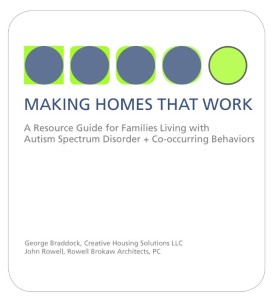On Monday, we attended a workshop on “Environment Matters”, which was presented by George Braddock. Mr. Braddock’s philosophy is that difference between a problem behavior and a preferred activity are negative consequences. He explained that a person-centered approach is the best way to engineering independence and supports his beliefs with Maslow’s Hierarchy of Needs Pyramid.  The physical environment where one breathes, eats, sleeps, baths and excretes is the basis for safety, love and belonging, esteem and ultimately self-actualization … this is the basis for a purposeful life. His work is guided by the principles that if an environment doesn’t work, it is not the person with the disability fault and moreover, you cannot fix a problem behavior in a broken environment.
The physical environment where one breathes, eats, sleeps, baths and excretes is the basis for safety, love and belonging, esteem and ultimately self-actualization … this is the basis for a purposeful life. His work is guided by the principles that if an environment doesn’t work, it is not the person with the disability fault and moreover, you cannot fix a problem behavior in a broken environment.
George reviewed what works and doesn’t work in housing situations. His values and assumptions, which guide his work and he listed at the workshop, include:
1. People with ASD have the ability and right to live in community and with their families.
2. The unique and enduring relationship of a family must be respected.
3. Families are committed to supporting and enriching the life of a person with ASD.
4. People with ASD can participate in the activities of daily living, including caring for themselves.
5. The environment should offer meaningful opportunities for a person to make decisions and exercise choice.
6. The unique interests and activities that bring joy and happiness to a person with ASD should be facilitated.
7. When the environment doesn’t work, it is not the person’s fault.
Braddock addressed and gave examples of environmental assessment +action plan and other questionnaires. This is not a substitute for holistic planning and should be used in conjunction with other person centered planning processes. Here are 5 steps:
- Identify the challenges you face every day in the home as a caregiver.
- Involve the individual.
- Assess the home and identify what isn’t working.
- Lean about common home modifications and strategies for specific challenges.
- Make an Action plan that is appropriate to your unique situation and circumstance.
We also spent time reviewing the six most common home modifications, why these modifications are and why they work. Most important, he provided specific real life examples. He also addressed specific challenges from elopement to angry neighbors. You can find more information here in his publication.
This training is part of a series to assist in addressing some of the concerns raised by the Maryland Commission on Autism (Commission). Through the Commission activities, individuals with autism spectrum disorders (ASD), families, and professionals from across the state noted that quality training for the adult provider system would enhance the services currently available in Maryland. To address this need, the Maryland Developmental Disabilities Administration (DDA) has allocated funding for fiscal year 2013 to provide specialized training to increase the availability of quality services for people with ASD. The series, coordinated by the Maryland Center for Developmental Disabilities (MCDD) at Kennedy Krieger Institute, will provide both basic and “nuts and bolts” information geared toward enhancing the service provider system’s capacity to support adults with ASD.
George Braddock pioneered the implementation of person-centered planning principles to homes for people with disabilities. In his 25 years as a licensed general contractor and housing consultant, he has been involved in more than 1,500 projects guided by these principles. Creative Housing Solutions, LLC was established so the knowledge and expertise gained from this significant work would be utilized elsewhere and continue to be improved upon. Work has been provided to families, provider agencies, non-profit housing organizations and governments. In addition to design and construction, his company has provided maintenance and repair services spanning decades on some projects. Mr. Braddock provides trainings, conducts workshops and presents at conferences introducing professionals, individuals, families and advocates to the critical role of the physical environment in shifting the balance for persons with developmental disabilities towards choice, control and participation in their homes.
[fblike layout=”standard” send=”true” action=”like” font=”arial” colorscheme=”light”]





